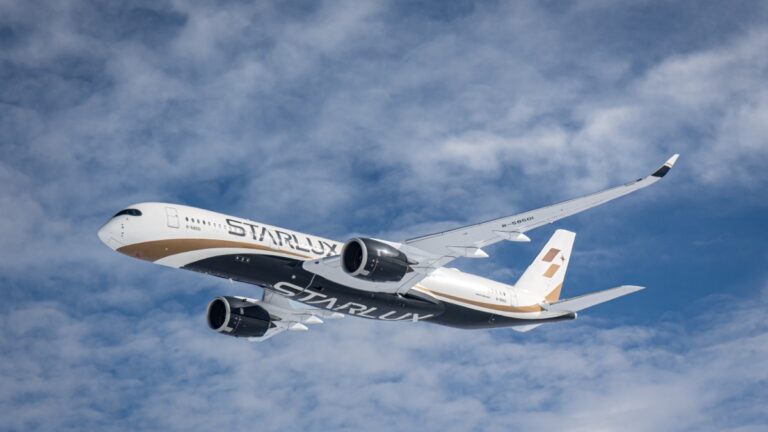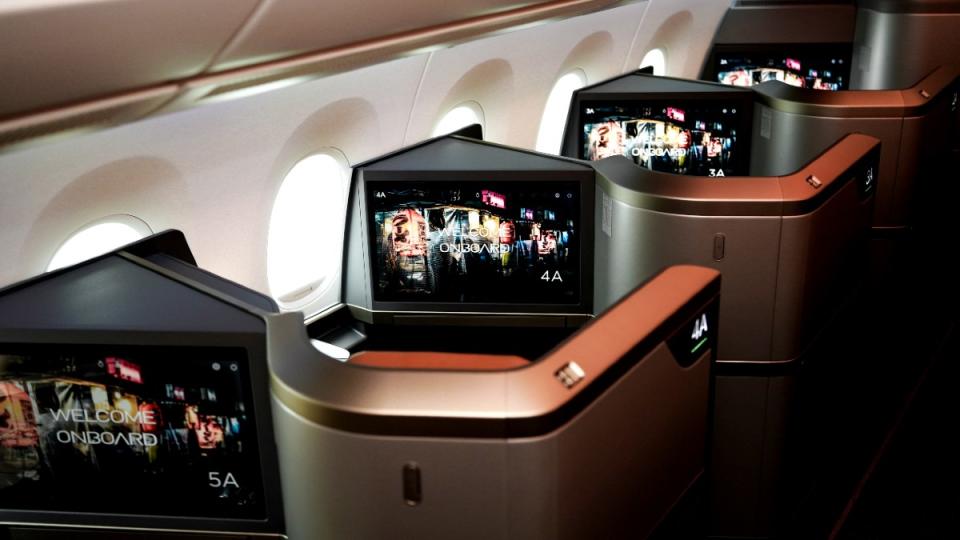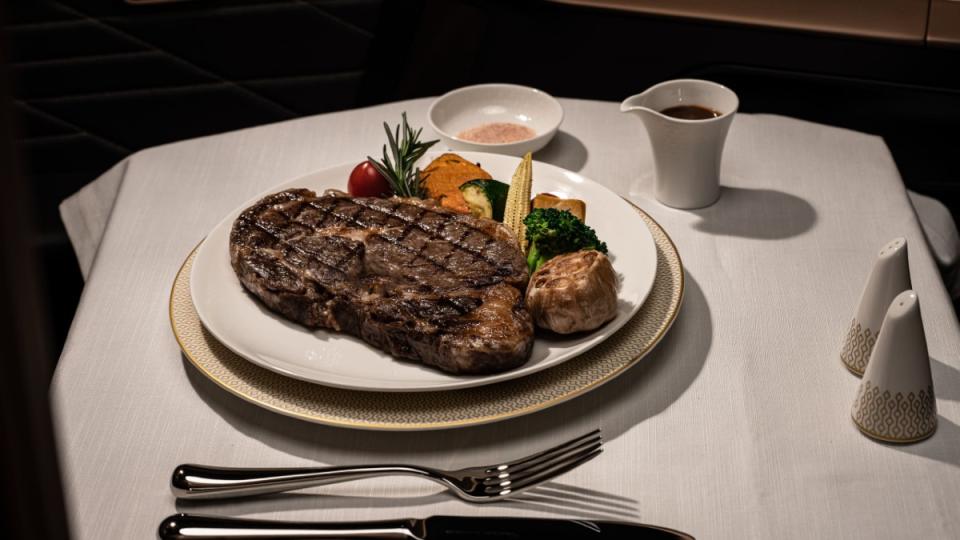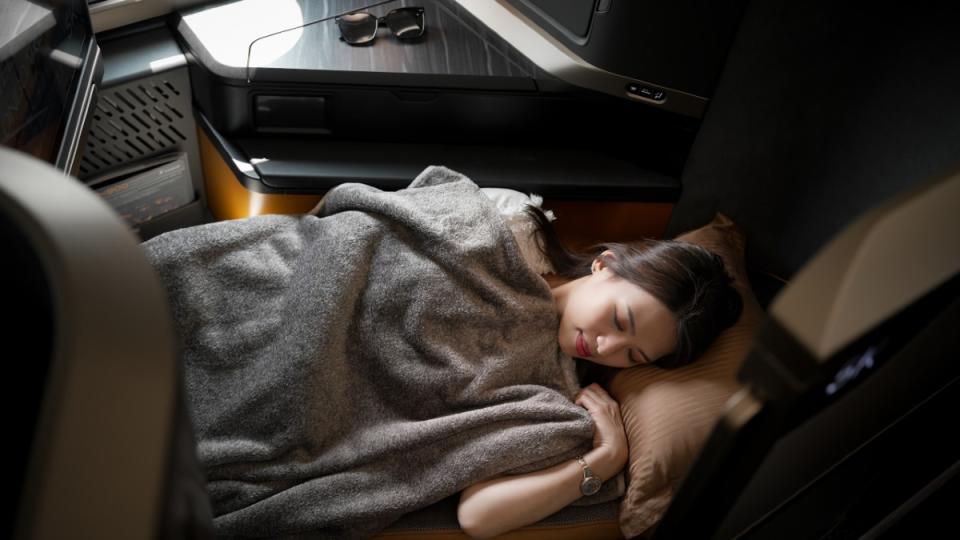Asia’s next big luxury airline?
It’s a lofty ambition with competitors like Cathay Pacific and Singapore Airlines. But Taipei-based Starlux Airlines, which already calls itself the “Emirate of Asia,” thinks it’s ready to take on those big airlines. The startup believes a combination of a premium in-flight experience, new aircraft and a route network linking North America and the Pacific will be the key to its ascent.
More from Robb Report
The startup airline flew its first flight within Asia in 2020. But founder Kuo Wei is part of the family that owns EVA Air, Taiwan’s second-largest airline after China Airlines, so he knows how to run an airline. Last year, Starlux launched direct flights from Los Angeles International Airport (LAX), its first U.S. gateway, and then added a route from San Francisco to Taipei. I was one of the first to experience the new roundtrip service from San Francisco to Taipei.
“We aim to make flying with Starlux a highly anticipated experience that stimulates and pleases all the senses: smell, taste, hearing, touch and sight,” the airline’s chief communications officer KW Nie told Robb Report, adding that the airline’s Airbus 350-900s are equipped with “the latest technology and premium cabin seats.”
The pod-style “Elements” suite in Business Class was spacious and felt private.
With a description like that, it’s impossible not to set off your hype detector. Did the experience live up to the hype? That depends on which section you sit in. The four cabins are split into four seats in First Class, 26 in Business Class, 36 in Premium Economy, and 240 in Economy. First and Business Class seats are in a 1-2-1 configuration with a reverse herringbone layout. Each seat is angled away from the aisle and has a fully closing door for privacy. I was in 3A in Business Class, which was fine for me.
The first impression of the cabin is a positive one. Starlux worked with BMW Designworks to come up with a neutral-toned interior with details like leather headrests, woven seats and rose gold trim in First and Business Class. “The myriad textures are intended to evoke the feeling of stepping into home,” says Ni. The same color scheme is carried throughout the cabin, from Premium Economy Class to Economy Class.
Starlux also has a signature fragrance by Taiwanese perfumer P.Seven called “Home in the Air,” which is reminiscent of wood, leather, iris and violets. The scent is wafted subtly on board but is also used in lounges and ticket counters, with the aim of adding an aromatherapy element to the flight.
A better view of the pod.
My seat near the front of the business class cabin was in the Elements Suite, a new pod design by Collins Aerospace that is said to be an upgrade over other airlines’ business class seats, with more storage space, more legroom, USB-C charging, a wireless charging pad and Bluetooth capability. Each seat also comes with a 4K 24-inch TV screen, built-in massagers, auto-dimming windows and a “Zero G” seat feature to reduce fatigue on long-haul flights. High-speed Wi-Fi is available free of charge to first and business class passengers.
On both the inaugural and return flights, business class was nearly full, with a few empty seats, but the seats in the back also appeared to be full.
After taking off on my return flight from Taipei to San Francisco, I quickly came to appreciate the airline’s partnership with Michelin-starred chef Lam Ming Kin (available only on flights departing Taipei). The airline advertises a catering partnership that offers an exclusive Modern Asian menu to business and first class passengers. The perfectly grilled Wagyu beef was cooked medium rare and tasted like it was freshly grilled, despite flying at 35,000 feet. During meal service, each course was individually plated. The flight attendants were personable and professional.
The airline has partnered with Michelin-starred chef Lam Ming Kin for catering.
After dinner, the staff prepared Starlux branded pajamas, mattress pad, slippers, noise-canceling headphones, pillows, and plush blankets for comfort on the long journey. I was able to sleep undisturbed for about half of the 14-hour flight. The sliding doors closed, providing extra privacy and making it easier to sleep. Entertainment options included the latest movies and TV shows, music, and an interactive flight map.
It’s hard to judge an airline on just two flights, but my experience in business class was good: the flight attendants were top notch, the food was excellent, and the seats were comfortable considering the length of the trip.
The sleeper seats have sliding doors for privacy.
My only complaint is the lounge service. The airline recently opened a luxurious lounge in Taipei, but it still operated out of a partner lounge and it didn’t come close to the luxury experience on board. The lounge was crowded and had limited seating and food and beverage options. The airline’s new lounge at its home airport in Taipei is great, but the brand needs to improve its pre-departure service at US airports.
The airline’s new San Francisco to Taipei flight is currently operating three times a week. Starlux’s extensive route network in Asia is one of the big draws for flying, especially if you need to make a connection. The airline plans to launch one U.S. route per year, and although it has a partnership with Alaska Airlines, it’s unclear whether it will be able to compete with top international carriers. Round-trip business class seats start at around $5,000, including connections to other parts of Asia.
The Best of Robb Report
Sign up for the Robb Report newsletter and follow us on Facebook , Twitter and Instagram for the latest news.
Click here to read the full article.





